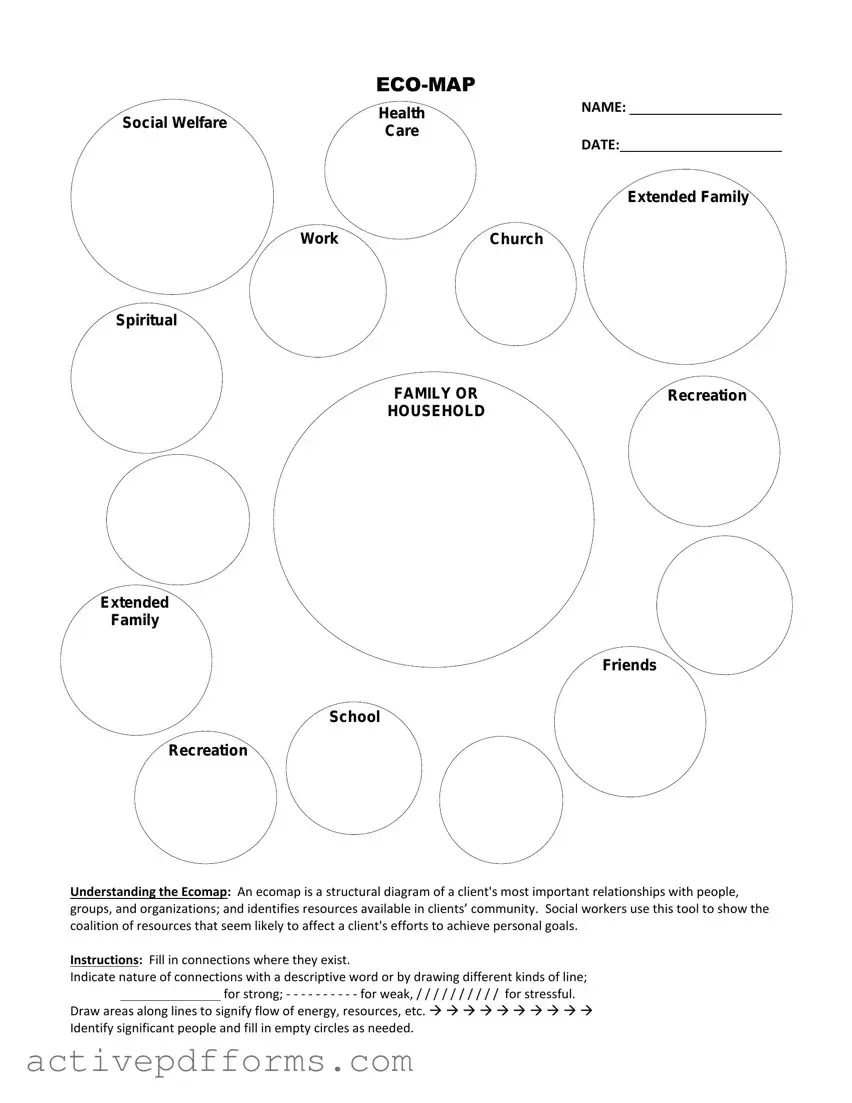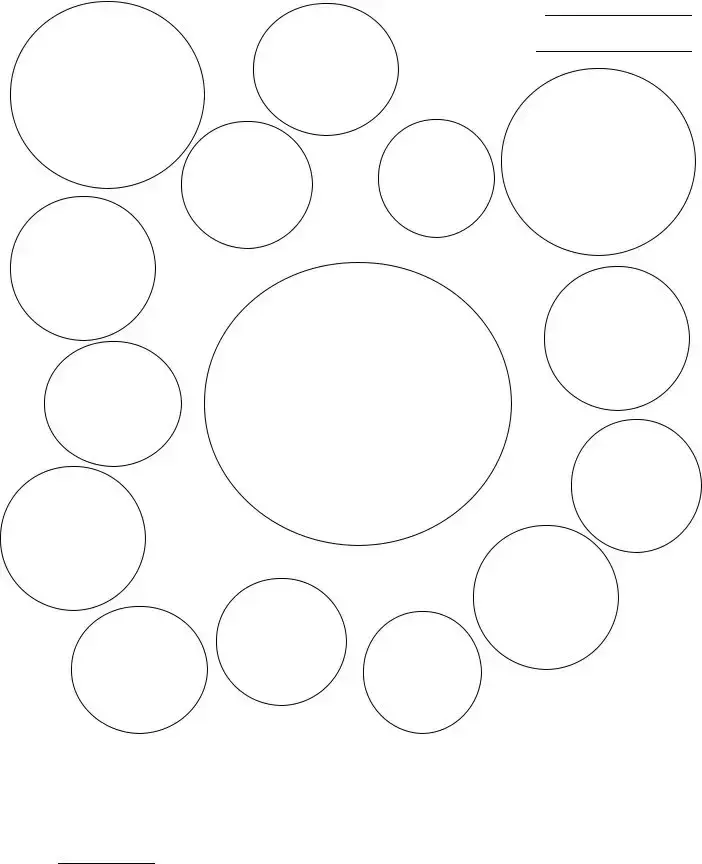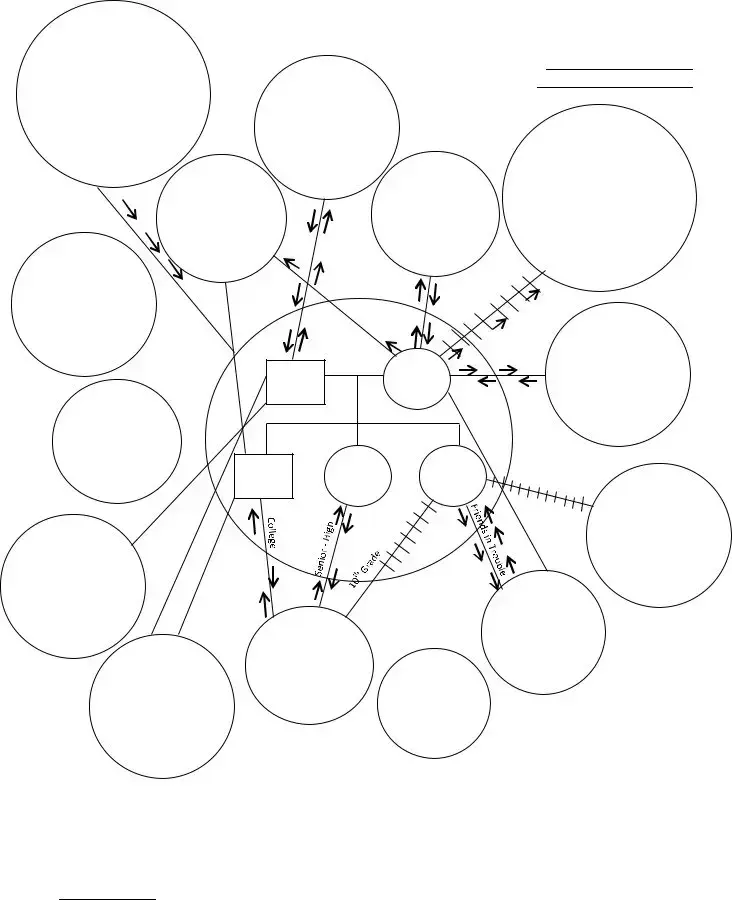In today’s fast-paced world, the well-being of individuals and families is influenced by numerous environmental and social factors. Understanding these complex interrelations is crucial for professionals working in social work, counseling, and healthcare sectors. The Eco Map form serves as a pivotal tool in this regard, offering a visual representation of a person or family’s ecosystem. This diagrammatic form highlights the various systems and networks that impact their lives, including educational, medical, financial, and social supports. By detailing the nature and strength of these relationships, the Eco Map enables professionals to assess the dynamics at play comprehensively. It not only facilitates a better understanding of the resources available but also identifies potential areas of concern or stress. As such, the Eco Map is an invaluable asset for developing more effective intervention strategies, tailored to the unique needs and circumstances of each individual or family. This introductory exploration seeks to underline the significant aspects of the Eco Map form, underscoring its role in fostering well-being through informed, empathetic care and support.


